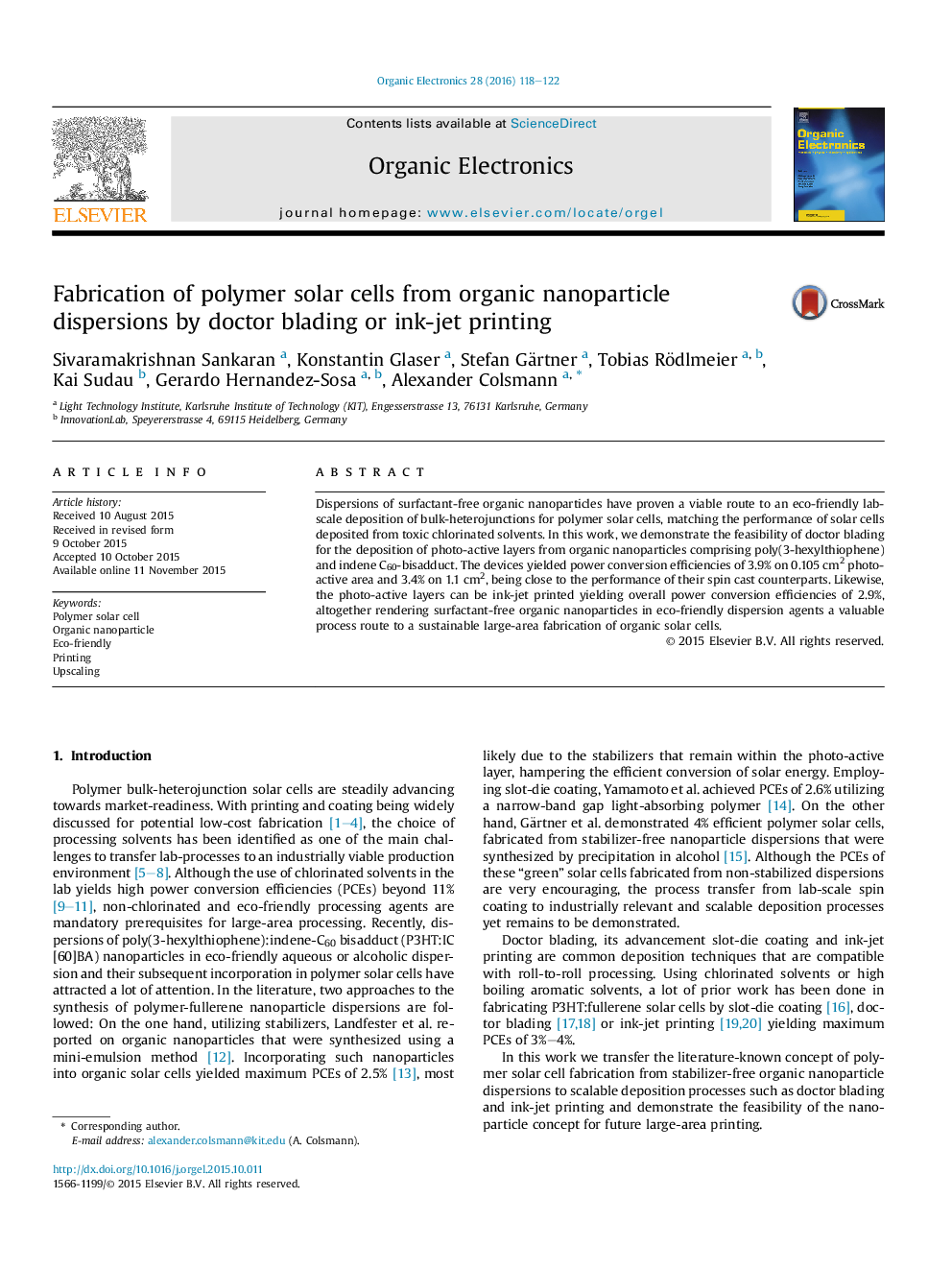| کد مقاله | کد نشریه | سال انتشار | مقاله انگلیسی | نسخه تمام متن |
|---|---|---|---|---|
| 1267122 | 1496829 | 2016 | 5 صفحه PDF | دانلود رایگان |
• Eco-friendly fabrication of polymer solar cells from organic nanoparticles by scalable deposition processes.
• Doctor bladed solar cells from organic nanoparticles yielding efficiencies of 3.9% (0.1 cm2) and 3.4% (1.1 cm2).
• Ink-jet printing of organic nanoparticles yields 2.9% efficient solar cells.
Dispersions of surfactant-free organic nanoparticles have proven a viable route to an eco-friendly lab-scale deposition of bulk-heterojunctions for polymer solar cells, matching the performance of solar cells deposited from toxic chlorinated solvents. In this work, we demonstrate the feasibility of doctor blading for the deposition of photo-active layers from organic nanoparticles comprising poly(3-hexylthiophene) and indene C60-bisadduct. The devices yielded power conversion efficiencies of 3.9% on 0.105 cm2 photo-active area and 3.4% on 1.1 cm2, being close to the performance of their spin cast counterparts. Likewise, the photo-active layers can be ink-jet printed yielding overall power conversion efficiencies of 2.9%, altogether rendering surfactant-free organic nanoparticles in eco-friendly dispersion agents a valuable process route to a sustainable large-area fabrication of organic solar cells.
Figure optionsDownload as PowerPoint slide
Journal: Organic Electronics - Volume 28, January 2016, Pages 118–122
